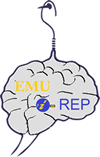JavaScript is disabled for your browser. Some features of this site may not work without it.
| dc.contributor.author | Kara, Can | |
| dc.date.accessioned | 2014-09-17T05:30:41Z | |
| dc.date.available | 2014-09-17T05:30:41Z | |
| dc.date.issued | 2013-09 | |
| dc.identifier.citation | Kara, Can. (2013). Simulating sustainable urban growth by using GIS and MCE based CA. The case of Famagusta, Nort Cyprus. Thesis (Ph.D.), Eastern Mediterranean University, Institute of Graduate Studies and Research, Dept. of Architecture, Famagusta: North Cyprus. | en_US |
| dc.identifier.uri | http://hdl.handle.net/11129/1325 | |
| dc.description | Doctor of Philosophy in Architecture. Thesis (Ph.D.)--Eastern Mediterranean University, Faculty of Architecture, Dept. of Architecture, 2013. Supervisor: Prof. Dr. Naciye Doratlı. | en_US |
| dc.description.abstract | ABSTRACT: This thesis utilizes “Geographical Information Systems” (GIS), “Multi Criteria Evaluation” (MCE) with “Cellular Automata” (CA) for simulating Sustainable urban growth scenarios for Famagusta and represents “Do Nothing” and “Sustainable” scenario-based spatial simulations of the City. Under Do Nothing scenario, Markov Chain probability analysis with CA models is used with temporal land use datasets based on the images from 2002 and 2011. It shows that, Famagusta is diverging from sustainable development. Future expansions of both medium dense and low dense urban zones are generally sited close to the existing built-up urban areas that are connected with road network. A similar model is employed for the application of Sustainable Urban Development policies by Policy Driven Scenario. As a main goal, Sustainable Urban Development includes three main criteria, Compactness, Environmental Protection and Social Equity. Additionally, Brownfield Development, Distance from Center, Soil Characteristics, Soil Productivity, Vegetation, Environmentally Protected Areas, Distance from Local Services, Distance from Open Space are used as criteria with Analytical Hierarchy Process (AHP). Having such a simulation with the combination of MCE, GIS and CA has several advantages. It presents possible alternative spatial development for the future. Moreover, it makes decision making steps easier for town planners and support spatial planning process. Finally, it creates more realistic results of our choices are related to urban growth. Keywords: Sustainable Urban Development, Geographical Information Systems, Multi Criteria Evaluation, Cellular Automataiv. ………………………………………………………………………………………………………………………………………………………………………………………………………… ÖZ: Araştırma Coğrafi Bilgi Sistemleri(CBS), Çok Kriterli Değerlendirme(ÇKD) tekniklerini Hücresel Otomasyon(HO) ile kullanarak Gazimağusa Kenti için sürdürülebilir senaryoların simlasyonunu ortaya koyar. Bu çalışma Gazimağusanın ilk “Mevcut’un Devamı” ve “Sürdürülebilir” senaryo-tabanlı mekansal simülasyonları sunar. “Mevcut’un Devamı” senaryosu altında, 2002 and 2011 yılı görüntülerden çıkan zamansal arazi kullanım veri setleri kullanılarak Markov Zinciri olasılık analizi ve Hücresel Otomasyon modelleri uygulanmaktadır. Bu senaryo göstermektedir ki Gazimağusa şehri sürdürülebilir gelişme sürecinden uzaklaşmaktadır. Gelecekte büyüyecek düşük ve orta yoğunluklu kentsel alanların yalnızca yol ağına erişime sahip mevcut yapılaşmış alanların yakınında yer seçtiğini ortaya koymaktadır. Benzer model politika tabanlı senaryoları kullanan sürdürülebilir kentsel büyüme modeli için de uygulanmaktadır. Ana hedef olarak, sürdürülebilir kentsel büyüme; kompakt büyüme, çevresel koruma ve sosyal eşitlik olmak üzere 3 temel kriter içermektedir. Bunlara ek olarak çöküntü alanlarının gelişimi, merkeze yakınlık, toprak yapısı, toprak üretkenliği, bitki örtüsü, çevresel koruma alanları, yerel hizmetlere yakınlık ve açık alanlara yakınlık mekansal kriterlerini Analitik Hiyerarşi Prosesi(AHP) yöntemi ile birlikte kullanmaktadır. ÇKD, CBS ve HO kombinasyonu şeklindeki bir simulasyonunun bazı avantajları bulunmaktadır. Simulasyon gelecekteki alternatif mekansal büyümenin olası sonuçlarını göstermektedir. Dahası karar verme sürecini basitleştirerek mekansal v planlama sürecini desteklemektedir. Sonuç olarak kentsel büyüme ile ilgili seçimlerimizin sonuçlarını daha gerçekçi bir şekilde göstermektedir. Anahtar Kelimeler: Sürdürülebilir Kentsel Gelişme, Coğrafi Bilgi Sistemleri, Çok Kriterli Değerlendirme, Hücresel Otomasyon. | en_US |
| dc.language.iso | en | en_US |
| dc.publisher | Eastern Mediterranean University (EMU) - Doğu Akdeniz Üniversitesi (DAÜ) | en_US |
| dc.subject | Architecture | en_US |
| dc.subject | City planning - Urban Planning - Gazimağusa (Cyprus) | en_US |
| dc.title | Simulating sustainable urban growth by using GIS and MCE based CA. The case of Famagusta, Nort Cyprus | en_US |
| dc.type | Thesis | en_US |









